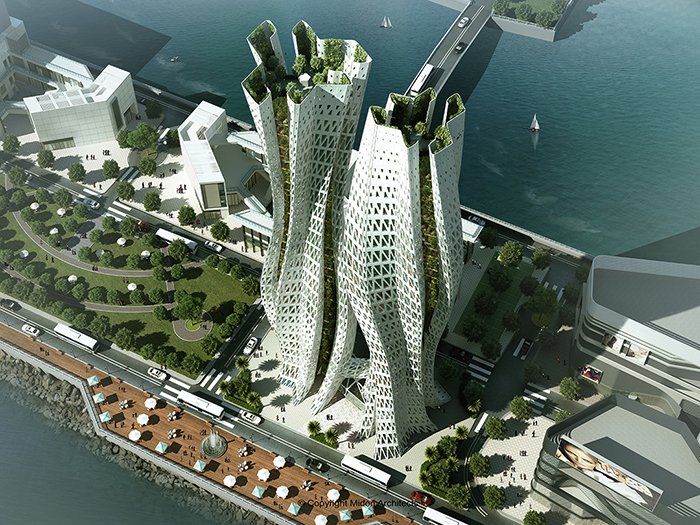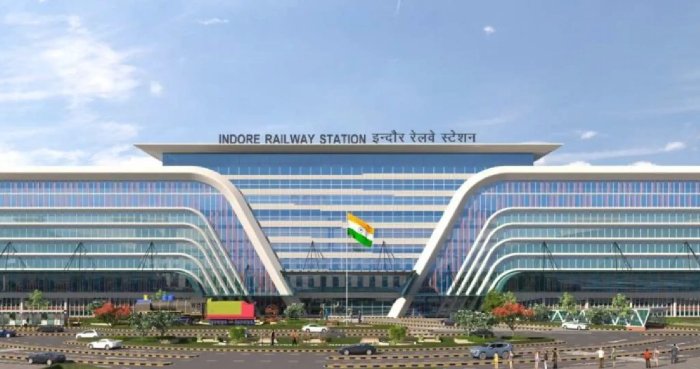A visionary architect at the helm of Midori Architects, known for her fusion of nature and modernity in sustainable design. In this interview, Suraksha Acharya, Founder, Midori Architects, delves into her inspiring journey and her mission to reshape the architectural landscape.

Can you share an inspiring anecdote or a significant moment from your architectural career that has influenced your approach to design and leadership?
Over the last 15 years, I have been passionately developing my architectural style which can be best described as a blend of natural and modern. I graduated with Honours from the School of Architecture and Planning, Anna University, Chennai in 2007 and went on to practice at TR Hamzah & Yeang Sdn, Bhd in Kuala Lumpur, under the mentorship of Dr Ken Yeang, the father of tropical design. In 2009, I chose to return to academics and pursued my Masters in Sustainable Environmental Design program at the Architectural Association (AA), London.
Starting Midori Architects was a natural step in my journey. As an innovator, I wanted to approach design challenges with a fresh, unique, modern sustainable perspective that crafts spaces for life well lived. My work strives to make buildings as sustainable as possible without compromising on client’s requirements or our architectural vision. I am a firm believer in design which aims to protect the environment and natural resources, recreating urban areas and buildings that are designed to fully cover their energy requirements without inducing environmental damage. This organic design process results in buildings that are futuristic and green. Whenever I design a building or a space, I try to blur the lines between the inside and the outside. It is this delicate balance that is enhanced by elegant aesthetics and energy efficiency at its core, integrating renewable energy systems as a supplementary active strategy into our buildings that aims at reducing the building’s carbon footprint.
Can you share your journey of becoming the head of Midori Architects, including key milestones and experiences that led you here?
In 2015 Midori gained international recognition with our competition-winning entry Shanty-Scraper, a vertical deconstructed Slum built from post-construction debris in Chennai, that won the coveted eVolo award 2015 (United States) and was selected to be displayed at the prestigious Technical Museum of Vienna (Austria) at the ‘Urban Innovations Exhibition’ from 2016-2018. Another internationally recognised design was my take on a breathing skyscraper ‘Aero Hive’ which won first place Skyhive Skyscraper Challenge, (United States) and the prestigious A ‘Design Award & Competition (Italy). This design, a ‘breathing skyscraper’ aims to challenge the common belief that contemporary tall buildings cannot be ventilated naturally due to their height and offers pause from the typical hermetically sealed glass-boxes, serving as a model of sustainability. This led me to be widely published in national and international books and journals and landed a slew of ongoing current projects from a 6-acre ocean-side retreat on Chennai’s east coast, to India’s first Net Zero residence (IGBC platinum) to India’s first Zero Carbon designed residence ‘Aeon House’ pursuing LEED certification in Chennai to name a few.
What challenges have you encountered during your career journey, and how have you managed to overcome them?
The gender gap in design and construction has been slow to close. In many ways, architecture is a profession that has been the epitome of dominant patriarchy with the majority of top-level rankings. Fortunately, unlike 10 years ago, more women are known from Chitra Viswanathan, Brinda Somaya and Sheila Sri Prakash who have increased awareness in the Industry, paving the way for other female architects to join the ranks such as myself. Female architects at the top of companies are also gaining more recognition as mainstream media are highlighting these women. Most architecture firms have fewer women in leadership roles in many design fields, especially in construction, and will take several more generations to achieve equity.
I am proud to say my firm Midori Architects is female-centric and I always have given women the opportunity when I can see they have the potential to take on higher roles in my organisation. I have been very privileged to have my own firm and, in the past, have faced my share of the obstacles as most women do when working in a big architecture firm. However, as a woman in architecture, I still face daily the challenge of balancing my workload and being a hands-on mom. Even though my firm is female-centric, we are still very much aware that the construction industry is male-dominated. However, I deal with it by proving myself in the boardroom with hard facts. We need to mentor, support, and uplift other women in this industry.
On a more personal note, my passion for the profession has played a key role in overcoming the internal challenges that I have faced, and these are also what motivated me to give my best in both realms. Having the support of the family and the firm helped me work through the setbacks. Regarding my experience, I always try to voice my opinions supported by factual and experienced-based knowledge
Tell us about a project from your portfolio highlighting the innovative use of steel in the design.
The greatest merit is the versatility of steel gives architects the freedom to achieve their most ambitious visions. An extremely special project and proud moment was when Midori Architects won the first runner-up at the prestigious ‘Notions of India’ competition held by Tata Structura among 5,000 entries from India and abroad. The competition brief asked us to engineer an iconic outdoor sculpture made of steel that best represents the new India. We designed ‘the Knot’ – a torus-type knot whose integrity is rooted in the union of three forces (positive, negative and neutral). The material used for the design is hollow steel tubes which are sustainable. Tubular assemblies can be quickly manufactured and assembled on-site within a day, considering costs. Steel, widely used for its strength, recyclability, and transport convenience, supports the circular economy by being easily repurposed without quality loss. Its strength reduces material usage, conserving resources and energy, while also enabling future modifications to structures.
What are your views on the role of steel construction in promoting sustainable and eco-friendly architectural practices in India?
To understand the environmental performance of a product, its entire life cycle needs to be taken into consideration. A life cycle assessment (LCA) of a steel product looks at resources, energy, and emissions, from the steel production stage to its end-of-life stage, including recycling. Very few manufacturers do an LCA assessment except the Big 3 in India.
We need to encourage open transparent factual conversation about the decarbonisation of steel manufacturing and its extraction processes to our natural resources. Also, a few drawbacks of steel need to be addressed through innovation, it is also susceptible to brittle fracture when it loses its ductility, its strength reduces at high temperatures due to fire causing buckling and it desperately needs an appropriate barrier between the metal element and the atmosphere when it comes to corrosion on a long-term exposure through painting, galvanising or other proprietary finishes.
Given the rapid growth and demand in the Indian steel construction market, how can architects incorporate steel structures to address the need for both speed and quality in construction?
The majority of structural steelwork is prefabricated, with very little site work required other than assembly via bolted connections. This leads to fast construction times and, with attention to staged delivery, decongested construction sites, which makes it ideal for congested CBD building projects on small sites. Prefabrication brings fabrication shop control over quality and the dimensional accuracy of computer numerical control (CNC) machinery. Precise control over quantities reduces waste and workflows incorporating seamless integration back to the 3D design models ensuring errors are minimised and architectural intent preserved. Unlike concrete, steel frames are at full strength as soon as they are completed, allowing immediate access for following trades. Printing of metallic components also features in leading-edge research, with applications more recently coming onto the market for 3D metal printers. Metal printing processes like powder bed fusion, metal binder jetting and directed energy deposition have grown significantly.
With AI and ML being increasingly incorporated into all aspects, how do you envision the new generation of architects using technologies in their designs?
The world’s growing complexity amplifies demands on our built environment, placing architects under the task of translating evolving societal needs into practical, sustainable solutions. Data availability reshapes the field, as advancing technology introduces fresh avenues for creative engagement. Architects’ work comprises creative analysis, originality, problem-solving, and human-centric skills not easily replicated by technology. Collaboration between humans and computers optimises tasks, allowing architects to prioritise creative aspects, and the software can automate tedious, repetitive day-to-day tasks. AI won’t replace architects but will transform the industry. Integrating AI requires architects to master new skills for a modern workflow, enhancing their role as orchestrators. AI already monitors construction sites, enhancing safety and productivity. The construction sector embraces AI for efficiency. Advanced modelling software like Grasshopper aids architects in experimenting with imaginative designs, reducing guesswork and enabling innovative planning, enabling architects to experiment and create more fantastical designs.






